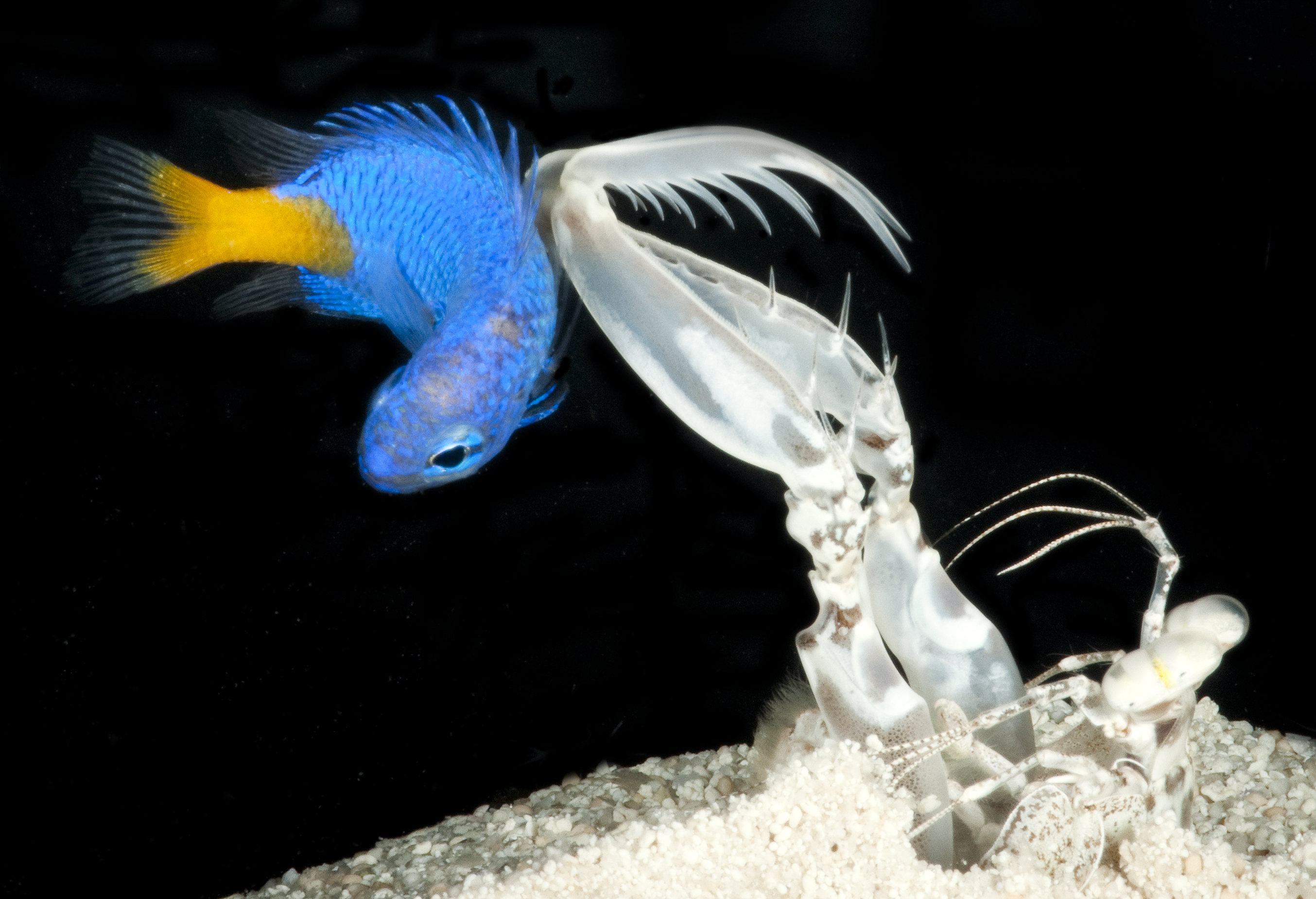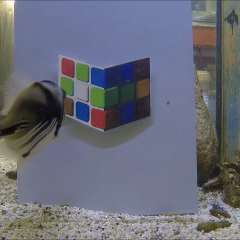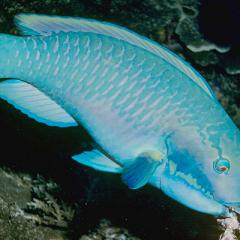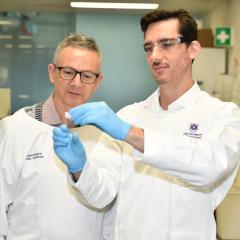
New research from The University of Queensland has unlocked marine life secrets that will help with cancer detection, computer data storage and even building satellites.
In a series of findings, Professor Justin Marshall’s team from the Queensland Brain Institute and collaborators from the US and UK have added to the understanding of how marine creatures see and interact, and how this knowledge can be adapted to advance the human condition.
“Have you ever wondered how a shrimp finds a mate?” Professor Marshall said.
“We’ve now determined that crustacean pick-up lines use a new language of light.
“Vision using wavelengths we are blind to – and whole dimensions of light we can’t see – have been exploited by Australian marine creatures for over 400 million years.
“We are just beginning to catch up.”
In other research, QBI’s Sensory Neurobiology Lab has shown how and why silvery fish are masters of disguise.
“We’re learning about how a 200kg tuna can tune out or disappear before your very eyes,” Professor Marshall said.
“These discoveries aren’t only a delight for those of us fascinated by nature, but several lines of bio-inspired engineering are emerging from our fragile and rapidly disappearing reefs.”
Mantis shrimp research sheds polarising light
Mantis shrimps, also known as “thumb-splitters” because of their flick-knife–like array of defence mechanisms, have been the subject of Professor Marshall’s research for 30 years. Their eyes are the most complex in the animal kingdom. His recently published findings present a new way of visualising polarisation information for polarisation-blind humans.
“Polarised light is useful in early cancer detection and the way mantis shrimp see their own polarisation reflections is even teaching us to redefine optical storage on computer disks,” Professor Marshall said.
The goggly-eyed gyrations of mantis shrimp eyes are in fact a mechanism to optimise polarisation information from objects such as other shrimps, a study with colleagues from Bristol University in England explains.
“This dynamic sensor tuning to match and sample the environment is just one more area of bio-inspiration these cunning crustaceans might inspire,” Professor Marshall said.
A study with co-workers from Tufts University in the USA shows how mantis shrimps use both smell and UV wavelengths to settle disagreements and determine gender. This is important in deciding who to mate with, especially for stomatopods.
Like Predator, fish reflect light for camouflage
Another study with long-term collaborator Professor Sonke Johnsen from Duke University in the US de-bunks a myth that silvery fish might be camouflaged in polarisation or more easily detected with polarisation vision.
“In fact, they just act as a simple mirror and reflect their immediate surroundings. The ‘predator’ in the 1987 Schwarzenegger movie used the same mechanism to disappear into the forest.”
“It is a shame and worry that while we are learning so much from the reef, we are being careless in our guardianship of it and may lose its other secrets before we even know them.
“The curiosity-driven research that my collaborators and I specialise in is what that leads to useful devices and advances in our own world,” Professor Marshall said.
Media: Professor Justin Marshall, justin.marshall@uq.edu.au; QBI Communications, communications@qbi.uq.edu.au.





